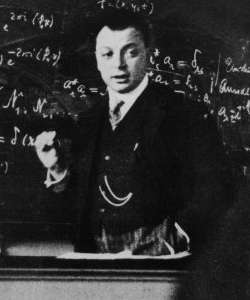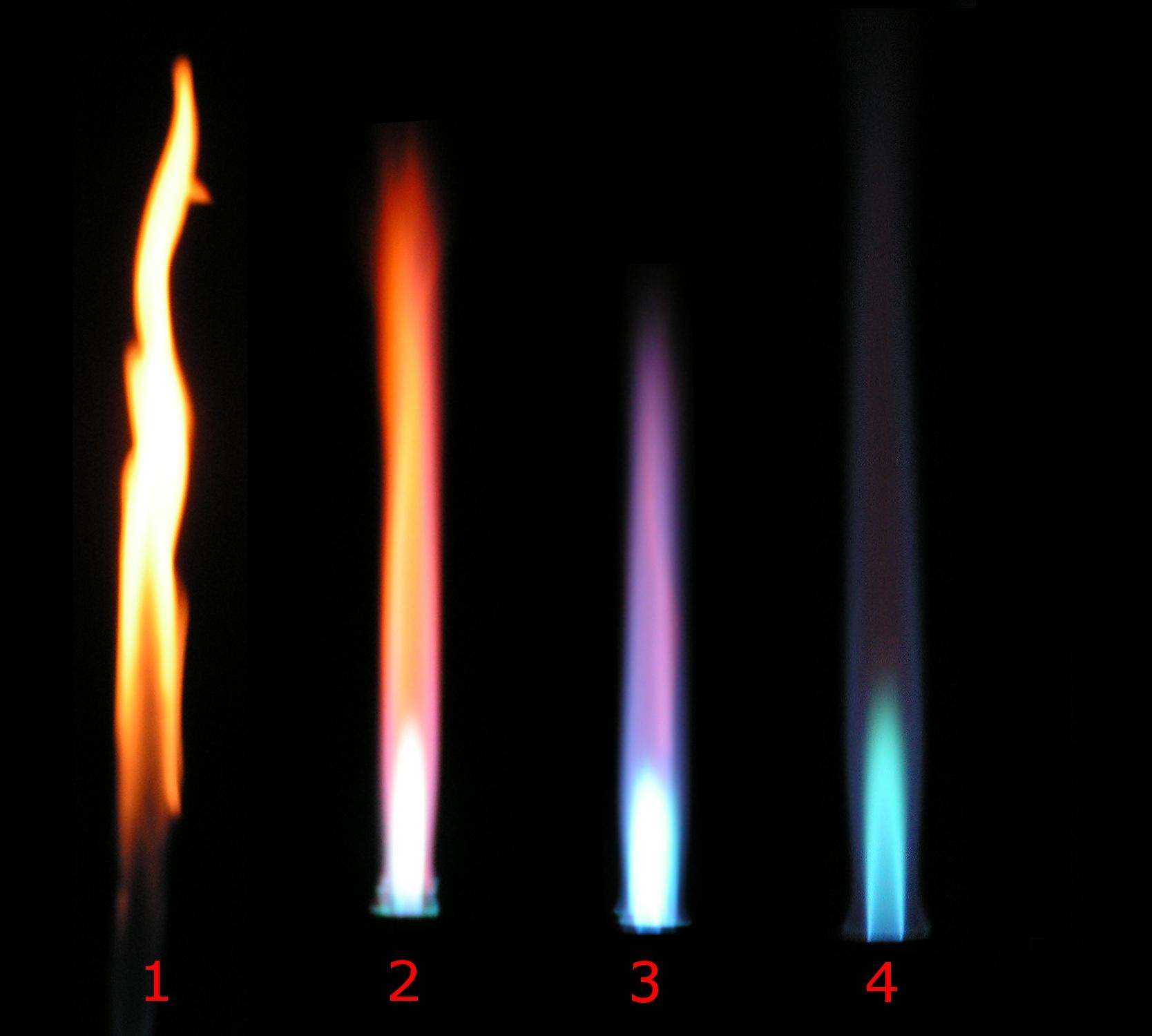|
Zeeman Splitting
The Zeeman effect () is the splitting of a spectral line into several components in the presence of a static magnetic field. It is caused by the interaction of the magnetic field with the magnetic moment of the atomic electron associated with its orbital motion and spin; this interaction shifts some orbital energies more than others, resulting in the split spectrum. The effect is named after the Dutch physicist Pieter Zeeman, who discovered it in 1896 and received a Nobel Prize in Physics for this discovery. It is analogous to the Stark effect, the splitting of a spectral line into several components in the presence of an electric field. Also, similar to the Stark effect, transitions between different components have, in general, different intensities, with some being entirely forbidden (in the dipole approximation), as governed by the selection rules. Since the distance between the Zeeman sub-levels is a function of magnetic field strength, this effect can be used to measure ... [...More Info...] [...Related Items...] OR: [Wikipedia] [Google] [Baidu] |
Plasma (physics)
Plasma () is a state of matter characterized by the presence of a significant portion of charged particles in any combination of ions or electrons. It is the most abundant form of ordinary matter in the universe, mostly in stars (including the Sun), but also dominating the rarefied intracluster medium and Outer space#Intergalactic space, intergalactic medium. Plasma can be artificially generated, for example, by heating a neutral gas or subjecting it to a strong electromagnetic field. The presence of charged particles makes plasma electrically conductive, with the dynamics of individual particles and macroscopic plasma motion governed by collective electromagnetic fields and very sensitive to externally applied fields. The response of plasma to electromagnetic fields is used in many modern devices and technologies, such as plasma display, plasma televisions or plasma etching. Depending on temperature and density, a certain number of neutral particles may also be present, in wh ... [...More Info...] [...Related Items...] OR: [Wikipedia] [Google] [Baidu] |
Wolfgang Pauli
Wolfgang Ernst Pauli ( ; ; 25 April 1900 – 15 December 1958) was an Austrian theoretical physicist and a pioneer of quantum mechanics. In 1945, after having been nominated by Albert Einstein, Pauli received the Nobel Prize in Physics "for the discovery of the Exclusion Principle, also called the Pauli exclusion principle, Pauli Principle". The discovery involved Spin (physics), spin theory, which is the basis of a theory of the Matter#Structure, structure of matter. To preserve the conservation of energy in beta decay, he posited the existence of a small neutral particle, dubbed the neutrino by Enrico Fermi. The neutrino was detected in 1956. Early life Pauli was born in Vienna to a chemist, (''né'' Wolf Pascheles, 1869–1955), and his wife, Bertha Camilla Schütz; his sister was Hertha Pauli, a writer and actress. Pauli's middle name was given in honor of his Godparent, godfather, physicist Ernst Mach. Pauli's paternal grandparents were from prominent Jewish families of ... [...More Info...] [...Related Items...] OR: [Wikipedia] [Google] [Baidu] |
Thomas Preston (scientist)
Thomas Preston (1860 in Kilmore, County Armagh – 1900)Thomas Preston Dictionary of Ulster Biography was an Irish whose research was concerned with heat, , and . He established empirical rules for the analysis of s, whi ... [...More Info...] [...Related Items...] OR: [Wikipedia] [Google] [Baidu] |
Lorentz Force
In electromagnetism, the Lorentz force is the force exerted on a charged particle by electric and magnetic fields. It determines how charged particles move in electromagnetic environments and underlies many physical phenomena, from the operation of electric motors and particle accelerators to the behavior of plasmas. The Lorentz force has two components. The electric force acts in the direction of the electric field for positive charges and opposite to it for negative charges, tending to accelerate the particle in a straight line. The magnetic force is perpendicular to both the particle's velocity and the magnetic field, and it causes the particle to move along a curved trajectory, often circular or helical in form, depending on the directions of the fields. Variations on the force law describe the magnetic force on a current-carrying wire (sometimes called Laplace force), and the electromotive force in a wire loop moving through a magnetic field, as described by Faraday's la ... [...More Info...] [...Related Items...] OR: [Wikipedia] [Google] [Baidu] |
Hendrik Lorentz
Hendrik Antoon Lorentz ( ; ; 18 July 1853 – 4 February 1928) was a Dutch theoretical physicist who shared the 1902 Nobel Prize in Physics with Pieter Zeeman for their discovery and theoretical explanation of the Zeeman effect. He derived the Lorentz transformation of the special theory of relativity, as well as the Lorentz force, which describes the combined electric and magnetic forces acting on a charged particle in an electromagnetic field. Lorentz was also responsible for the Lorentz oscillator model, a classical model used to describe the anomalous dispersion observed in dielectric materials when the driving frequency of the electric field was near the resonant frequency of the material, resulting in abnormal refractive indices. According to the biography published by the Nobel Foundation, "It may well be said that Lorentz was regarded by all theoretical physicists as the world's leading spirit, who completed what was left unfinished by his predecessors and prepar ... [...More Info...] [...Related Items...] OR: [Wikipedia] [Google] [Baidu] |
Cadmium
Cadmium is a chemical element; it has chemical symbol, symbol Cd and atomic number 48. This soft, silvery-white metal is chemically similar to the two other stable metals in group 12 element, group 12, zinc and mercury (element), mercury. Like zinc, it demonstrates oxidation state +2 in most of its compounds, and like mercury, it has a lower melting point than the transition metals in group 3 element, groups 3 through group 11 element, 11. Cadmium and its Congener (chemistry), congeners in group 12 are often not considered transition metals, in that they do not have partly filled ''d'' or ''f'' electron shells in the elemental or common oxidation states. The average concentration of cadmium in Earth's crust is between 0.1 and 0.5 parts per million (ppm). It was discovered in 1817 simultaneously by Friedrich Stromeyer, Stromeyer and Karl Samuel Leberecht Hermann, Hermann, both in Germany, as an impurity in zinc carbonate. Cadmium occurs as a minor component in most zinc ores and i ... [...More Info...] [...Related Items...] OR: [Wikipedia] [Google] [Baidu] |
Gauss (unit)
The gauss (symbol: , sometimes Gs) is a unit of measurement of magnetic induction, also known as magnetic flux density. The unit is part of the Gaussian units, Gaussian system of units, which inherited it from the older centimetre–gram–second system of units#Electromagnetic units .28EMU.29, centimetre–gram–second electromagnetic units (CGS-EMU) system. It was named after the German mathematician and physicist Carl Friedrich Gauss in 1936. One gauss is defined as one maxwell (unit), maxwell per square centimetre. As the centimetre–gram–second system of units (cgs system) has been superseded by the International System of Units (SI), the use of the gauss has been deprecated by the standards bodies, but is still regularly used in various subfields of science. The SI unit for magnetic flux density is the Tesla (unit), tesla (symbol T), which corresponds to . Name, symbol, and metric prefixes Although not a component of the International System of Units, the usage of the g ... [...More Info...] [...Related Items...] OR: [Wikipedia] [Google] [Baidu] |
Sodium
Sodium is a chemical element; it has Symbol (chemistry), symbol Na (from Neo-Latin ) and atomic number 11. It is a soft, silvery-white, highly reactive metal. Sodium is an alkali metal, being in group 1 element, group 1 of the periodic table. Its only stable isotope is 23Na. The free metal does not occur in nature and must be prepared from compounds. Sodium is the Abundance of elements in Earth's crust, sixth most abundant element in the Earth's crust and exists in numerous minerals such as feldspars, sodalite, and halite (NaCl). Many salts of sodium are highly water-soluble: sodium ions have been Leaching (chemistry), leached by the action of water from the Earth, Earth's minerals over eons, and thus sodium and chlorine are the most common dissolved elements by weight in the oceans. Sodium was first isolated by Humphry Davy in 1807 by the electrolysis of sodium hydroxide. Among many other useful sodium compounds, sodium hydroxide (lye) is used in Soap, soap manufac ... [...More Info...] [...Related Items...] OR: [Wikipedia] [Google] [Baidu] |
Bunsen Burner
A Bunsen burner, named after Robert Bunsen, is a kind of ambient air gas burner used as laboratory equipment; it produces a single open gas flame, and is used for heating, sterilization, and combustion. The gas can be natural gas (which is mainly methane) or a liquefied petroleum gas, such as propane, butane, a mixture or, as Bunsen himself used, coal gas. Combustion temperature achieved depends in part on the adiabatic flame temperature of the chosen fuel mixture. History In 1852, the University of Heidelberg hired Bunsen and promised him a new laboratory building. The city of Heidelberg had begun to install coal-gas street lighting, and the university laid gas lines to the new laboratory. The designers of the building intended to use the gas not just for lighting, but also as fuel for burners for laboratory operations. For any burner lamp, it was desirable to maximize the temperature of its flame, and minimize its luminosity (which represented lost heating energy). Bunsen ... [...More Info...] [...Related Items...] OR: [Wikipedia] [Google] [Baidu] |
Michael Faraday
Michael Faraday (; 22 September 1791 – 25 August 1867) was an English chemist and physicist who contributed to the study of electrochemistry and electromagnetism. His main discoveries include the principles underlying electromagnetic induction, diamagnetism, and electrolysis. Although Faraday received little formal education, as a self-made man, he was one of the most influential scientists in history. It was by his research on the magnetic field around a Electrical conductor, conductor carrying a direct current that Faraday established the concept of the electromagnetic field in physics. Faraday also established that magnetism could Faraday effect, affect rays of light and that there was an underlying relationship between the two phenomena. the 1911 ''Encyclopædia Britannica''. He similarly discovered the principles of electromagnetic induction, diamagnetism, and the Faraday's laws of electrolysis, laws of electrolysis. His inventions of electric motor, electromagnetic rotar ... [...More Info...] [...Related Items...] OR: [Wikipedia] [Google] [Baidu] |
Encyclopædia Britannica
The is a general knowledge, general-knowledge English-language encyclopaedia. It has been published by Encyclopædia Britannica, Inc. since 1768, although the company has changed ownership seven times. The 2010 version of the 15th edition, which spans 32 volumes and 32,640 pages, was the last printed edition. Since 2016, it has been published exclusively as an online encyclopedia, online encyclopaedia. Printed for 244 years, the ''Britannica'' was the longest-running in-print encyclopaedia in the English language. It was first published between 1768 and 1771 in Edinburgh, Scotland, in three volumes. The encyclopaedia grew in size; the second edition was 10 volumes, and by its fourth edition (1801–1810), it had expanded to 20 volumes. Its rising stature as a scholarly work helped recruit eminent contributors, and the 9th (1875–1889) and Encyclopædia Britannica Eleventh Edition, 11th editions (1911) are landmark encyclopaedias for scholarship and literary ... [...More Info...] [...Related Items...] OR: [Wikipedia] [Google] [Baidu] |








